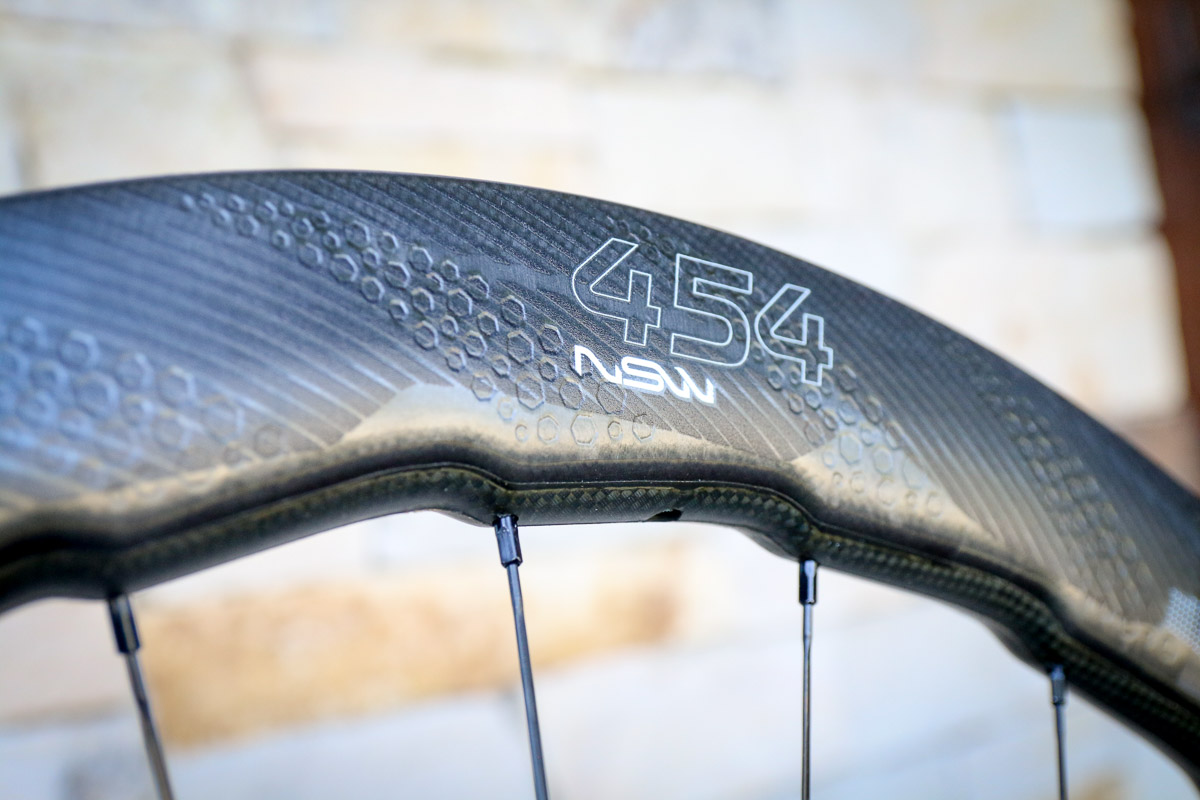Yesterday, Zipp unveiled their newest innovation in aero rim design. The 454 NSW claims to be the fastest rim they’ve ever designed, but more noteworthy seems to be the shape which is based on “biomimicry.” To get a little more in depth on the development and the creation of the design (plus an explanation of that whole biomimicry thing), Zipp put together the video after the break which reveals exactly how they came to the conclusion of their fastest wheel yet…
MMMM……Aaaah! That’s some tasty Kool-Aide.
It looks like some folks did their homework, so racers rejoice. I ride. A lot. I don’t race. I get this is not for me, but still so much talk of speed (meh) and stability (cool), but nothing of comfort or much of durability…I don’t know. I guess I crawl over to some retrogrou-nab-quarterly-reader corner for my jollies.
Have fun!
That’s true but patents only go so far. They don’t need to copy this exactly, they may need only small trimmings or additions. Honestly, it may be better because they’ll be smart enough to make the wheel tubeless compatible. Maybe something better than the NSW which I’ve tried but in the rain, it still sucks, it’s just better than most.
What a foolish statement. You imply that Zipp judgement is flawed because they choose to put tubeless ready branding on the these wheels. The intended market doesn’t care about tubeless. But maybe Zipp wanted to do more testing with tubeless but we are so impatient you go to knock offs!!!! Seriously wow!
The intended market is people that want fast wheels. 4 of the 5 fastest clinchers are tubeless. You can run that fastest clincher on a tubeless or non-tubeless wheel. The exterior rim shape is what Zipp is focused on. Making these tubeless shouldn’t effect that…it didn’t with Enve, HED or Reynolds. By the way, they’ve already made tubeless ready rims.
If they were meant for pros, they’d really be tubulars. Outside of a small number of teams using clinchers for time trials, none of the world tour teams use clinchers. Clinchers have been faster than tubulars for years but they aren’t as great for flats when you’ve gotta stay in a group on the flats at 25-28mph(much of the time) I agree, tubeless is where its at but pros aren’t really using those either and in reality, few in the public are(no matter how hard you push) but the losses are non-existent compared to regular clinchers so why not?
Watched most of the vid but tuned out near the end – maybe I missed something while they showed humpback whales. At any point does Zipp actually address whether these things have less drag in the wind tunnel at various yaw angles than other current rim shapes? Would seem to be one of the more relevant metrics, no?
The most significant thing in this video is right around 5 minutes in. Zipp accidentally showed off their “Aero Stick” which is likely to be an aero field testing tool. It appears to be a wind speed/yaw sensor and probably has an accelerometer in it as well. Combined with a power meter, all one has to do is go out and ride to find their CdA. Swap helmets, lower your bars, etc, until you find the most aero and efficient position and gear setup for yourself.
Ideally, you do everything. I don’t think Zipp expects to see people that run their chains past 5000miles to buy these. I’m a HED fan but I’m sure these are fast. The idea is that if you had their old wheels and you’re riding next to your physical twin but you have these wheels and they don’t, you’ll be faster and have more control in the wind. These can and will make a slow rider as less slow rider and a really fast rider a faster really fast rider.
The primary focus here seems to be on stability in common crosswind conditions and not on outright drag reduction. You know a 404 is more aero, but a 303 will be better in crosswinds, but if the 454 was both, would you want it? Obviously the price tag makes that no more than a hypothetical exercise…I’d just get 303s.
I do wonder about the lack of tubulars, though more teams are going towards clinchers. None of their NSW wheels (with Cognition hubs) are currently offered as a disc-brake model; perhaps one is coming but the design of the hub (front especially) may limit them to rim brakes.
If the front and rear rims have a different number of ‘HyperFoils’, how does the differing angular velocity affect the flow attachment and downstream characteristics? At what velocity (ω) do the the wheels achieve increased flow attachment and how sensitive is that attachment?
It’s interesting that through exhaustive tunnel-testing and CFD aided ‘design optimization’ (in what looks to have been static, or non rotational testing conditions), that the number of HyperFoils ends up being 18 on the front and 24 on the rear. I’d like to see the white paper on these findings.
